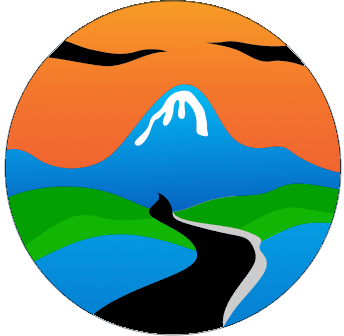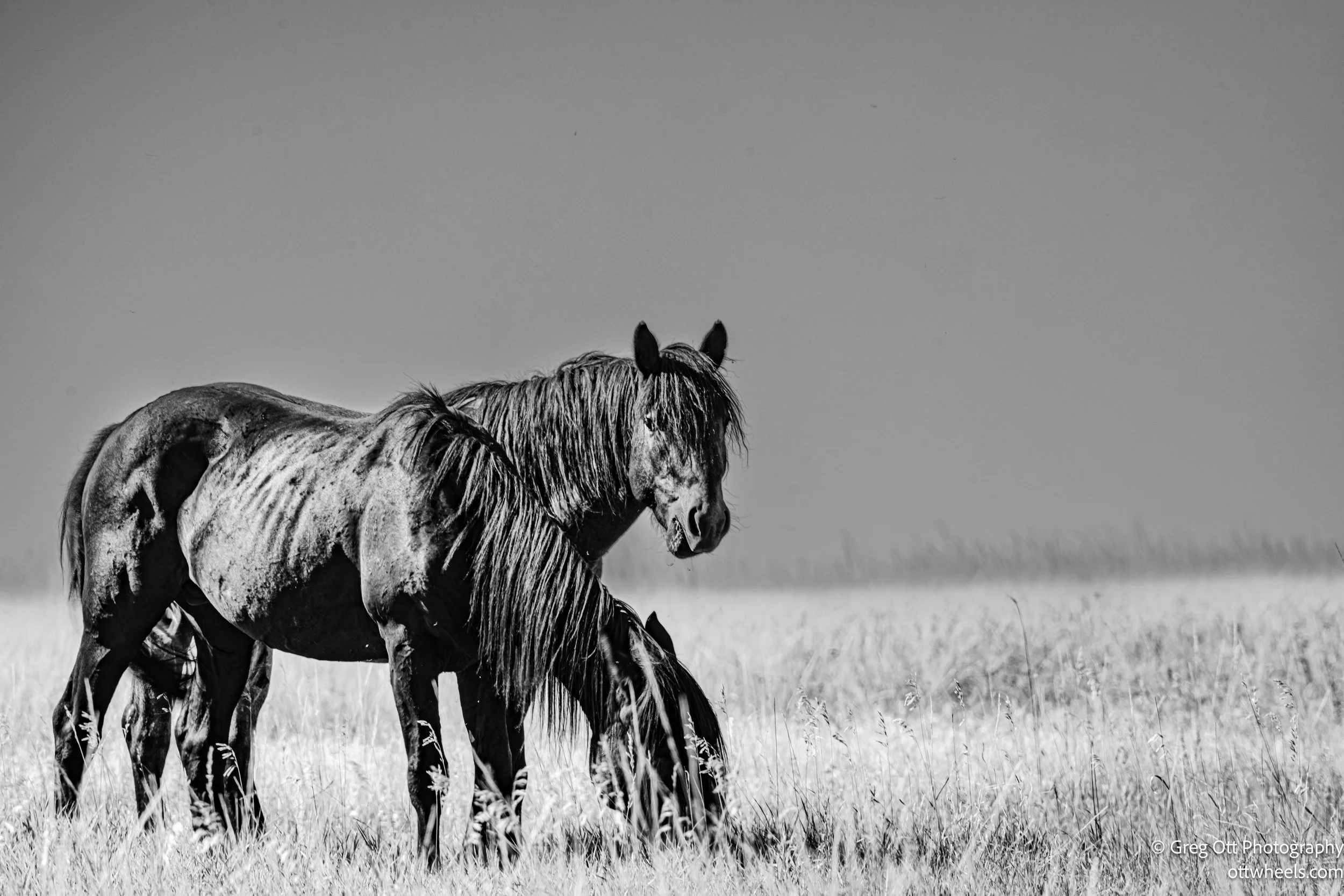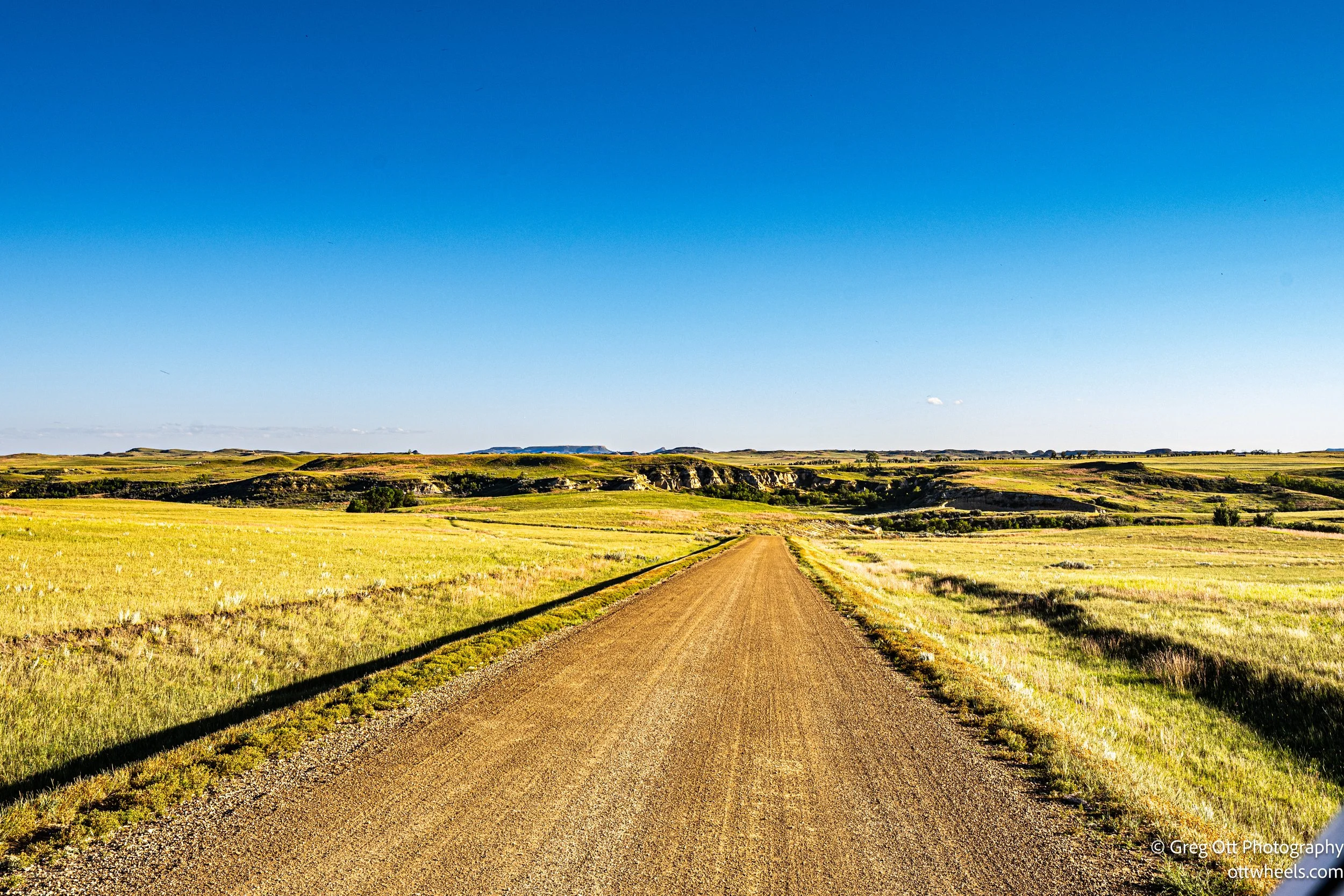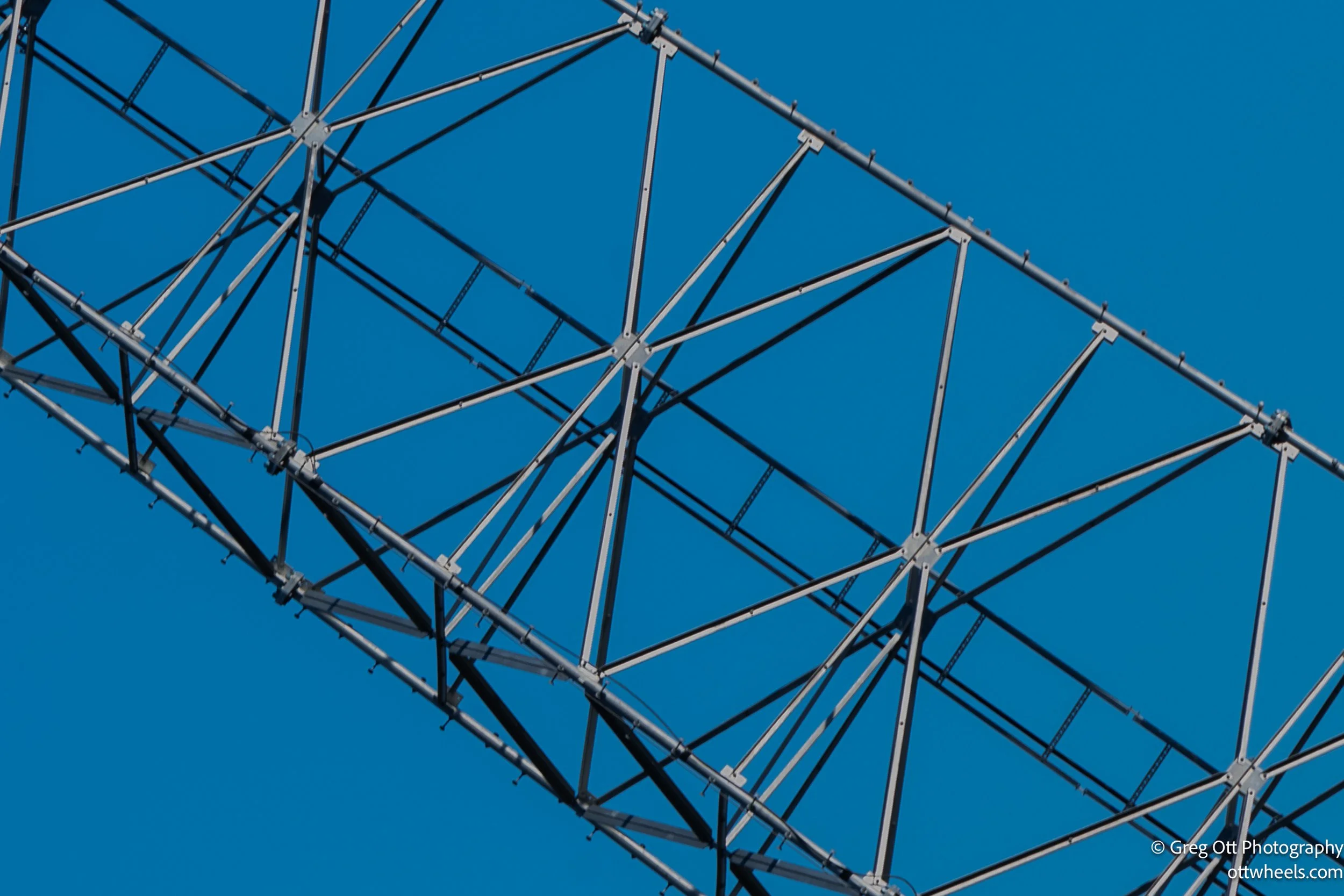Petrified Forest Theodore Roosevelt National Park
I woke up at the Grassland Boondocking site just outside Theodore Roosevelt National Park to the sound of vans rumbling past my spot. That was my cue to get moving. By 9:00 a.m., I was slowly navigating out of the site, easing over ruts and large rocks, trying not to put the van’s interior through too many shake tests.
By 9:30, I was at the park entrance. I showed my pass and driver’s license, and the ranger waved me through—no lines that early in the morning, though I was told they start to form around 11:00 a.m. At the Visitor Center, I asked about getting to the Petrified Forest. The woman behind the desk asked plenty of questions about my vehicle before assuring me, “You’ll be fine.” Then she reached under the counter for a special map—just a single sheet with a map on the front and detailed driving instructions on the back. “There are no signs until the last two miles,” she warned.
She was right. The drive took nearly two hours, and I missed a critical turn. Google Maps tried to “help” by rerouting me into a cattle-loading pen in the middle of a field—proof that sometimes technology just makes things worse. On the way, I had to inch through a herd of cows and calves blocking the road, mooing in protest. They ignored my horn and only moved when the van nearly nudged them aside.
Back on track, I carefully navigated every intersection, making sure I didn’t miss another turn. Dust clouds billowed as locals sped past me at 60 mph while I stuck to the posted 45. At the trailhead, I counted eight other vehicles. My van was the lone outlier.
I had planned to do the ten-mile Petrified Forest Loop but decided against it—too risky to be caught out there alone after dark. Instead, I took the North Trail, about five miles round trip.
The trail wound through open grasslands with sweeping views of the badlands. A mile in, I spotted two wild horses grazing on a hillside. They barely noticed me as I passed—a reminder that out here, people are just guests.
I came across a dark band running through the hills that looked like a stripe of charcoal. It was a lignite coal seam, formed millions of years ago when ancient swamps were buried under layers of mud and sand. Apparently, in some places these seams even catch fire, baking the surrounding clay into a reddish, brick-like rock.
The highlight came at the petrified forest itself, where massive tree stumps turned to stone scatter across the slope. These fossils are reminders that this land was once a swampy forest millions of years ago. Amid the stone trees, a lone bison rested in the shade, cooling itself on a warm afternoon. The combination of ancient geology and present-day wildlife was surreal.
Lizard?
At one point, I strayed off the trail but corrected myself using AllTrails. That detour gave me another surprise—a lizard I’d never seen before, perfectly camouflaged against the dusty earth.
I continued past the Petrified Forest and the trail opened up into wide stretches of prairie. The grasslands rolled out in every direction under a bright blue sky, with nothing but open space between me and the horizon. Looking west, the views were long and uninterrupted, just layers of hills fading into the distance. It was quiet, empty, and peaceful in a way that’s hard to describe.
On the return leg, a herd of about fifteen wild horses crossed the trail, stopping to check me out before moving on. Between them, the petrified forest, and the bison, the North Trail felt like a living snapshot of both the ancient and modern history of this park.
By the time I finished, I had only seen four other hikers. When I returned, the trailhead was empty. For a moment, I considered staying overnight—the Starlink signal was strong, I had food and water, and it was wonderfully quiet. In the end, I returned to Grassland Boondocking.
On the way back, I stopped to photograph a cell tower glowing in the evening sun. The steel shimmered against a deep blue sky—an odd but beautiful scene.
Then, trying to rejoin I-94, I discovered there was no on-ramp. Google rerouted me onto a newly paved stretch of road that might be the smoothest I’ve ever driven. Bathed in golden-hour light, the blacktop reflected its painted lines so vividly it looked like a painting.





























